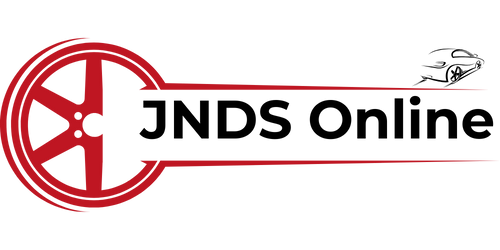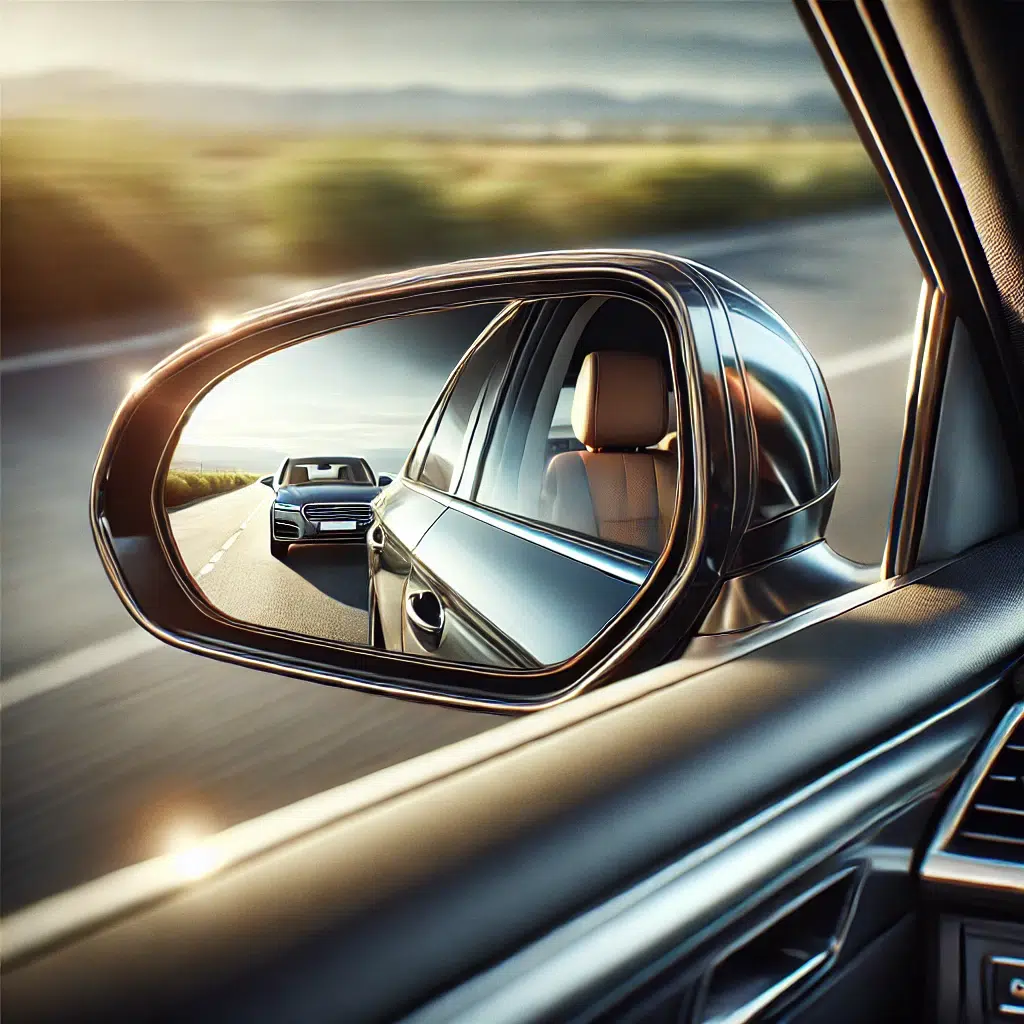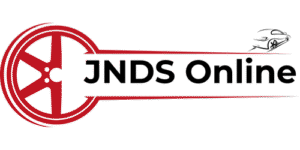So, in this article today, I'm just going to talk about your mirrors
- why do we use them
- what we're using them for
- when they use them
- which mirrors to use
- and also including the blind spots.
Thanks for reading my article on mirror work when driving, if you would like to sign up for my online driving course put together by a fully qualified driving instructor you can sign up here
So the first thing with your mirror is to understand what each mirror is.
So you've got your center mirror, which is placed to the left of your steering wheel, about eye level get a full view of the rim of the rear window.
You should always make sure this is correctly set to get a full view behind.
I always use the head restraints in the back seat as a guide.
If you can see them in the bottom, you don't want to see any grey on the roof of the car, if possible.
That will help you not need to dip your body down or stretch up to see what's behind you.
So that's how I would set the center mirror
It's flat glass, so it gives a true image.
People underestimate the importance of the center mirror.
It tells you how close cars are, where your door mirrors won't do that.
Door mirrors
Your door mirrors, you've got one on the left and one on the right.
You've got convex glass in there which gives a distorted view.
Things tend to look further away or smaller in there, which is why we shouldn't judge how far away traffic's coming when moving off from the side of the road because it gives a wider field of vision because of the curved glass.
But things appear smaller!
Why are we checking them?
So we're making sure it's safe to do what we want to do.
So, for example, if we're checking our center mirror, we need to adjust our braking accordingly to how close the car is behind.
For example, a tailgater.
- If there's a tailgater, you can check early, see and brake lightly, and nice and early.
That'll give him more time to react to your brake lights
- Also, we're using the door mirrors to see what's beside us!
Specifically, we need to make sure that there are no cyclists beside us on either side.
- For example, on a right turn, that catches people out more than the left, because your normal road position is on the left side anyway.
For example, around about 90% of the time, you're going to be going ahead in the left lane on the roundabout.
So going right on a roundabout, for example, if you don't check your center and right mirror, there could be a motorcyclist overtaking you, coming to a roundabout, switching to the right-hand lane.
If you don't check, you could be forcing them into traffic on the other side of the road, or even worse, hitting them so it's really important to check what's behind you and beside you, effectively with the mirrors and how you're going to affect the things behind.
Visit JNDS Online for all your driving needs.
What are we looking for in the mirrors?
We're looking for all road users.
We're looking for, potentially
- bikes
- motorbikes
- pedestrians
- motor vehicles
- animals.
I always like to add animals.
You know, a dog off a leash could be there.
Always think of it as your pet.
You know, if you come out of your driveway, check your pets are not there using mirrors and both blind spots there before you move the car off.
Accidents do happen when we check them.
It simply forms part of the MSM routine
So you'll do your mirrors before any
- Any change of direction,
- Any speed change
- Any signal.
If you steer left, I always say, check your center and then left mirror if you're going to steer right, pre-empt steering right, and check your center and right mirror again, looking to save any motorcyclists or other vehicles overtaking if you're going right specifically.
However, it's just as important to check for your center and left, because there could be a cyclist on the left-hand side undertaken, especially in a city like London.
- You'll always check your mirrors
- in your center one
- before any speed change.
So before you brake make sure you're checking your center mirror in good time to read the traffic behind.
It's a true image.
Just make sure you're checking what's behind before you brake.
If you've got a tailgater, you don't want them getting close to you or hitting the back of you.
If you see it early, you can gently brake early.
- Use well before you do any of these things, before changing
- any direction
- before changing
- any speed, and
- before any signal, whichever direction that would be.
You'll always check the center mirror before the door mirror again.
One gives a true image, the other one gives what's beside you.
Blind spots
Your blind spots are areas in the car, that are made up of plastic, the majority of the time, which you can't see through.
So the full circumference.
The circumference of the car is mainly made up of glass.
However, there are areas between the glass panes where the structure of the car is that you can't see through.
You've got six blind spots in your car.
- You've got your rear left side where the rear window screen is.
- You've got a blind spot between the two doors on your left side
- you've got the blind spot, which is directly to your left.
- the other three are in the same places on the right side of the car
- As you look in the corner on the left side
Those are the three on the left side of your car.
You've got another three on the right side of the car, which is direct to you, right where your door mirror is.
You've got your main blind spot.
What you'll check when moving off or doing any maneuvers, is just over your right shoulder out the back window, not just out the side window of your door.
And then you've got the other blind spot which is again, where your rear seat belt is on your rear seats to the left side.
- The four main blind spots in a car the the 2 at the front,
- two on the windscreen
- two where the seat belts are for the front driver's seats and passenger seats.
Your rear blind spots you don't use as much.
However, when you're doing the pull-up on the right and reverse two-car lens maneuver or whenever you're parked on the right-hand side of the road.
The left blind spot is severely affected as you're moving off, so you do have to adjust your body to make sure it's safe and use the door mirror to see anything approaching.
So that's your blind spot.
I hope this helps and sign up for our courses below


